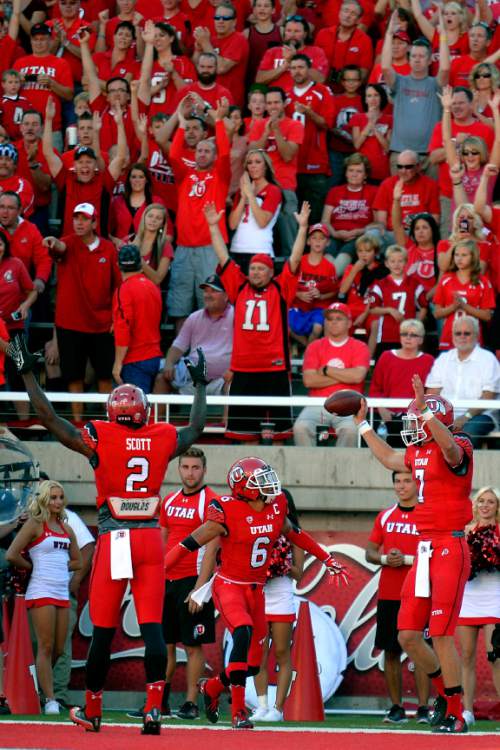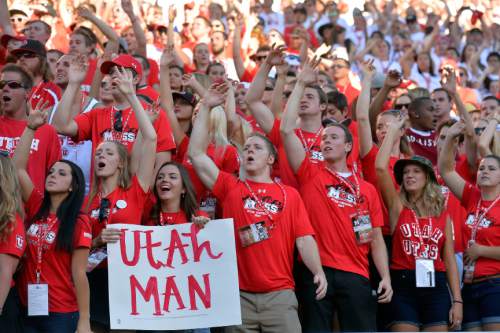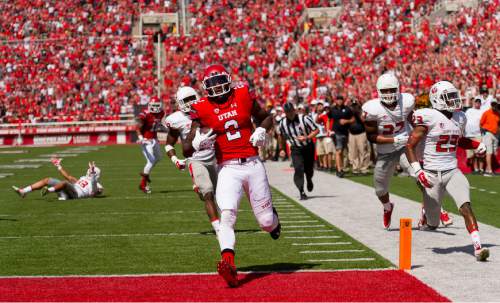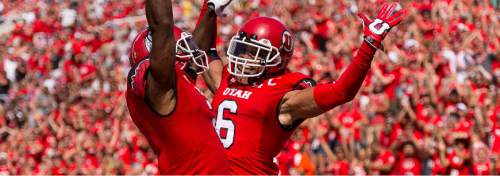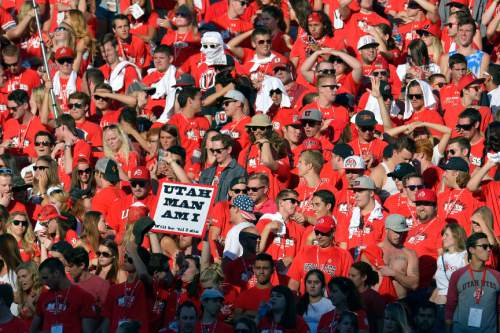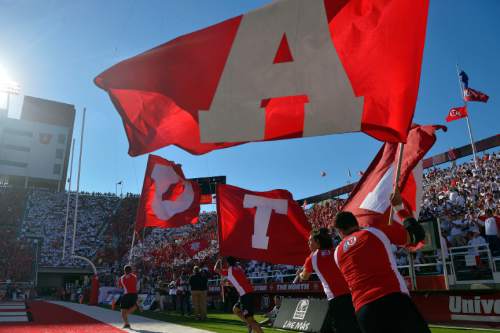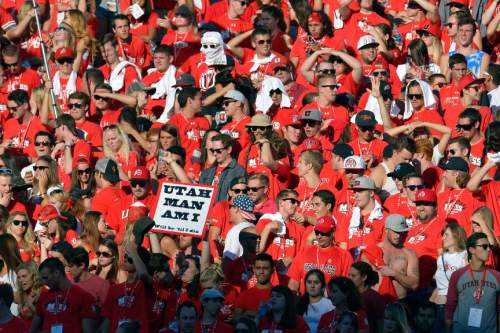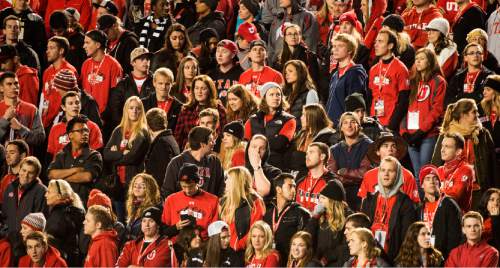This is an archived article that was published on sltrib.com in 2015, and information in the article may be outdated. It is provided only for personal research purposes and may not be reprinted.
When the lightning and rain subsided and the game resumed in the fourth quarter after a lengthy delay last September, thousands of University of Utah fans moved into the prime seats once occupied by Michigan ticket-holders.
The Ute loyalists demonstrated that they were unimpressed by the sheer size of 109,000-seat Michigan Stadium. They enjoyed upgrading their view from the 95th row in the south end zone to the 50-yard line, right behind the Utah bench.
That's an extreme example, but it illustrates the nature of the fan experience in college football nationally — and frames the debate locally. Amid renovations and enhancements taking place around the country, Utah athletic director Chris Hill strongly believes that maintaining high demand for good tickets is better for business than adding a lot of new seats. Marketing experts and other administrators support him.
Dwindling attendance is a major issue in college athletics in an era when, among other factors, the TV viewing experience is of such high quality. Considering the trend elsewhere, expanding Rice-Eccles Stadium beyond its 46,000-seat capacity would require a belief that the state of Utah is unlike the rest of the country. When has that ever been true?
I know this: Every time Hill addresses the subject, as in a recent media session, some percentage of Ute fans — whose passion I respect — cite other schools' ongoing improvements and accuse Hill of simply lacking vision. So when he says, "There isn't a person in our league that would tell us to expand," the expansionists are convinced those ADs are just protecting themselves, tricking Hill in an effort to keep the Utes from overtaking their programs.
No, they're not. I believe Arizona athletic director Greg Byrne, a genuine star of the profession, is being honest when he advises that adding seats is "not a wise investment."
Some schools "have overbuilt their stadiums," Byrne said. "That's something you don't want to do, in today's world of television being as good as it is."
There's a distinction between renovating and expanding. Utah has both an opportunity and a responsibility in the coming years regarding the south end zone building, which Hill labeled "a piece of junk." Hill is making sure a 120-foot video board, scheduled for a 2016 debut, is properly positioned, allowing for future construction. As Utah State and other schools are doing with their projects, Utah can capitalize with premium seating — not by significantly increasing capacity. Louisville has succeeded with its expansion from 42,000 to 55,000 seats, but that defies the trend.
Paul Swangard, managing director of the University of Oregon's Warsaw Sports Marketing Center, cited "basic economic theory: scarcity helps keep demand strong."
When Swangard suggests that many schools would "love to be able to rip out 20,000 seats and sell 'em to Utah," those Ute fans naturally respond that they'll take 'em — and fill 'em. The problem is those seats, by location, would be worse than the ones currently being sold at Rice-Eccles Stadium.
Using comparisons of an average Major League Soccer venue and the Dallas Cowboys' new home, Swangard suggests college programs are "in a much more attractive position if your stadium if more MLS-like than Jerry World-like."
The Utes do have some unique things going for them in this market, compared with other Pac-12 schools, including a growing population, no competition from the NFL and a relatively easy commute to the stadium. Utah should sustain its five-year run of selling out every game for a long time. The Rice-Eccles Stadium is terrific, although I wish more fans would arrive prior to kickoff.
Administrators love being to publicize the high demand for their tickets. As Arizona's Byrne said, "When fans worry that if they give up their seat, they can't get it back, that is a wonderful place to be as a program."
In reporting a 98-percent rate of season-ticket renewals for a sixth consecutive year, Utah noted 1,000 requests to upgrade or add seats. The expansionists use that information to bolster their own argument. The issue is that those 1,000 fans either wanted better seats or more tickets in their current spots — not seats farther from the field.
So I have to endorse Hill's stance that the math just doesn't work. It would take a long time to recoup the $50 million cost of adding 10,000 seats. He's more concerned about enhancing the facilities where athletes spend most of their time and giving fans a better experience than just building a bigger stadium, and that makes sense to me.
Nobody can accuse Hill of being miserly, when the school has invested heavily in a football complex, a basketball practice facility and a softball stadium and increased coaching salaries, among other upgrades in the athletic department.
Fans always will expect more from their athletic director. In the case of Utah's football program, those demands are right where Hill wants them to be.
Twitter: @tribkurt Empty seats
Football attendance for Pac-12 schools in 2014, compared with 2013 (— indicates change was less than 1 percent):
School Avg. Change
UCLA 76,650 +9%
USC 73,272 —
Washington 64,508 -6%
Oregon 57,422 —
Arizona State 57,179 -9%
Arizona 50,710 +6%
Stanford 47,862 -6%
California 47,675 -3%
Utah 46,437 +3%
Oregon State 42,176 -2%
Colorado 37,778 -2%
Washington State 30,794 +4%
Other Utah schools
BYU 57,141 -7%
Utah State 20,467 -12%




